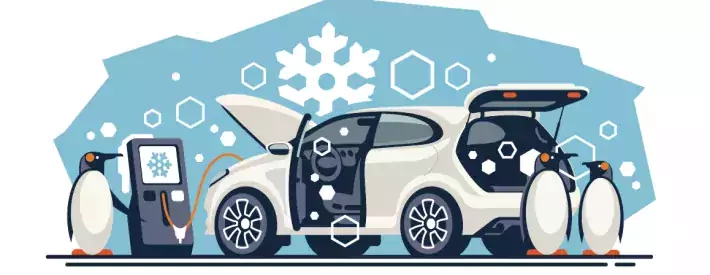Keep your cool with air-con servicing

Air conditioning season is fast approaching. Here’s what you need to know to get ready
What qualifications do you need to offer air-conditioning servicing? You need to be qualified to work with fluorinated gas (F gas), as it’s against the law to offer air-con servicing otherwise. A civil penalty can be issued for breaking the law.
So, if you’re thinking about offering this service to customers, make sure you have the right qualifications to:
- Install new systems;
- Service and maintain systems;
- Check for leaks;
- Recover gases;
- Decommission and dispose of old systems;
- Work on refrigerated trucks weighing more than 3.5 tonnes; and
- Work on refrigerated trailers made to be towed by trucks.
For this work, you may need one or more of the following:
- A Category 1 certificate to carry out all activities;
- A Category 2 certificate to install, maintain, service and recover refrigerant from systems containing F gas equivalent to less than 5 tonnes of CO2;
- A Category 3 certificate to recover refrigerant from systems which contain less than 3kg of F gas; or
- A Category 4 certificate to check equipment for leaks if you don’t break into the refrigeration circuit.
Qualifications must be obtained from an accredited organisation, and each technician needs their own qualification, even if they’re working for somebody else.
This isn’t just a box-ticking exercise either. The F gas used as refrigerant is dangerous to the environment, and if it meets your skin, it can cause painful freeze burns. If contact is made with the eyes, it can blind. So it’s worth taking these qualifications seriously.
How does an air-conditioning system work?
Air-conditioning systems consist of six integral parts:
- Refrigerant;
- Compressor (which contains the refrigerant);
- Condenser;
- Receiver;
- Thermal expansion valve; and
- Evaporation coils.
When operated, the refrigerant in the air-conditioning system travels to the condenser. Fresh air from outside the vehicle passes over the condenser, causing the gas to cool and become a liquid.
Once liquified, it passes through a receiver, removing any impurities, before reaching the thermal expansion valve. The valve allows control of the temperature by. adjusting the flow of the liquid. The liquid is then turned to a vapour as it passes through the evaporation coils and gets blown into the cabin as cool air. The refrigerant has become a gas again by this point, returning to the compressor ready for the process to start all over again.
What does a typical air-con service include?
Servicing air-conditioning systems remains one of the cheaper aspects of vehicle maintenance, although the reliance on F gases will likely increase costs. The refrigerant recharge is not the only aspect of the service.
Common checks during servicing include:
- Removing the old refrigerant and refilling it to the correct level (this usually includes the correct oil too);
- Temperature check (before and after the service);
- Vacuum check (other tests are usually used for further diagnostic work); and
- Anti-bacterial clean.
Why do air-conditioning systems need servicing?
Air conditioning is expensive to run, at around four horsepower (or 3kW). As a non-essential extra, air con can often be switched off to avoid unnecessary cost, or to increase the range in the case of an EV. However, when an air-conditioning system sits idle for a length of time, it becomes the perfect breeding ground for bacteria and may produce foul smells. It can also have an adverse effect on allergies.
It’s also worth bearing in mind that air-conditioning systems circulate an oil to lubricate the compressor. Without this, it can seize, and the oil level may need topping up every so often.
Air-conditioning systems also typically require re-gassing every two years as the system is not completely sealed. Around 10 to 15% of the refrigerant escapes every year, regardless of whether the system is being used or not. If the system doesn’t have enough refrigerant, it can cause component failure.
Servicing is an opportunity to check the flexible parts of the system for perishing. Other parts of the system may require a bit of digging to inspect.




